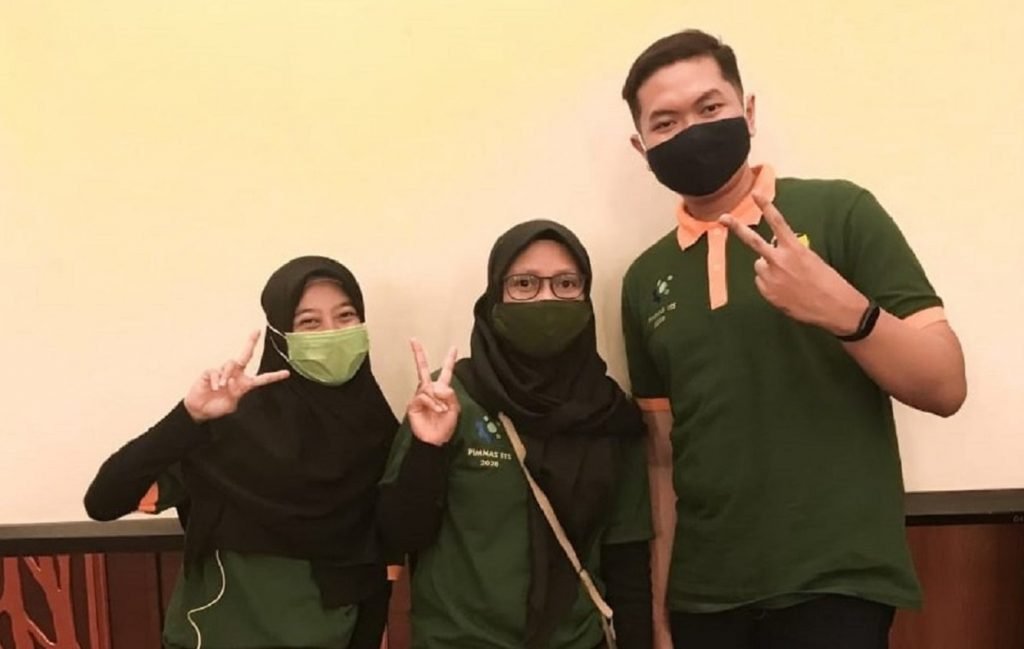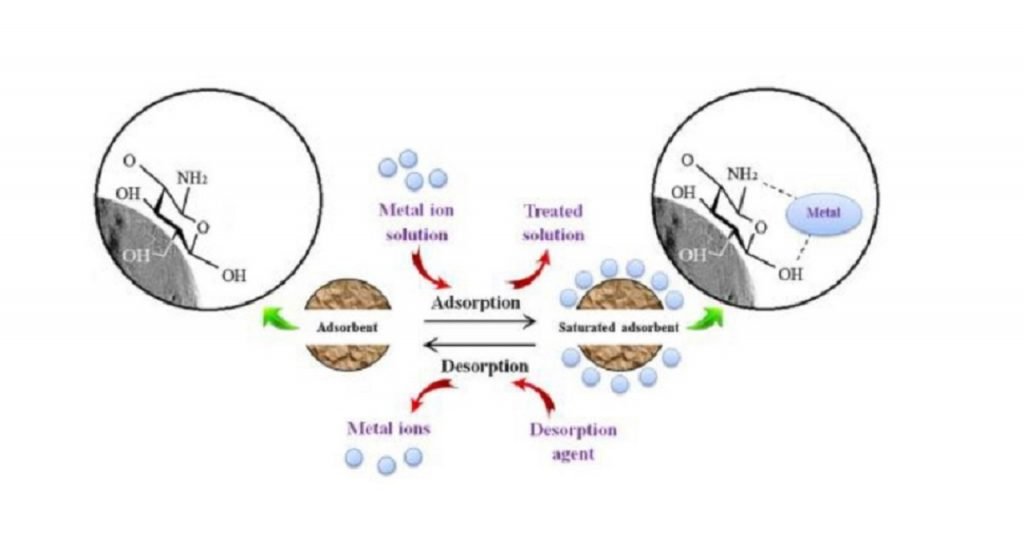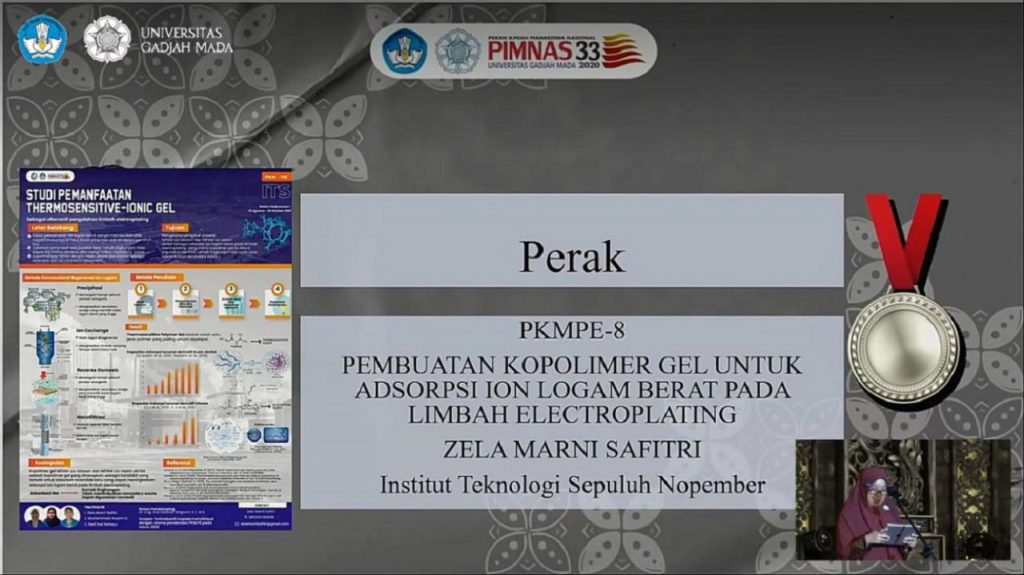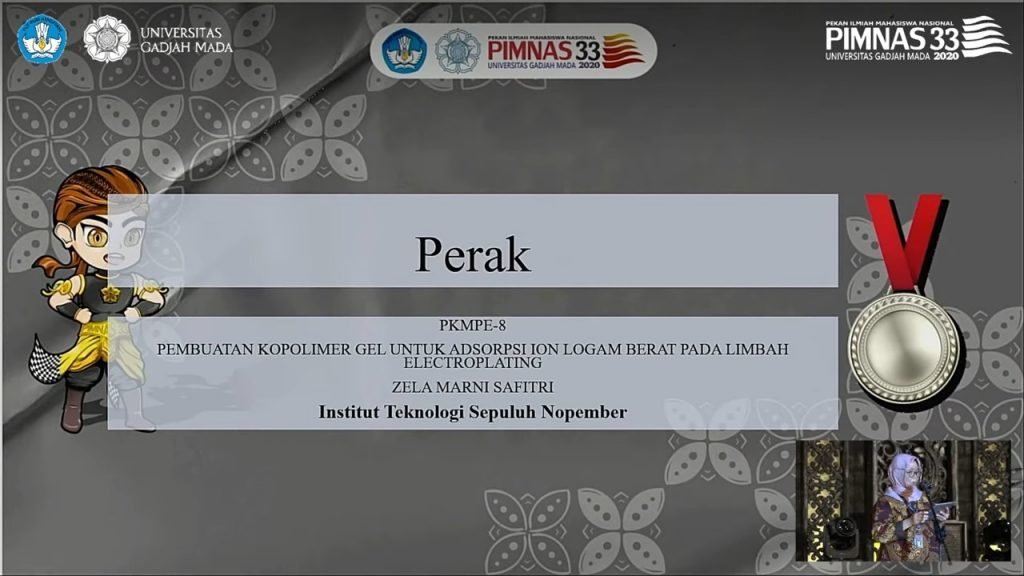ITS Student Team Creates Heavy Metal Waste Absorbing Gel Copolymer

(From left) ITS student team consists of Serli Dwi Rahayu, Zela Marni Safitri, and Muhammad Asyam Dzaky
ITS Campus, ITS News – Online lectures do not prevent students from the Institut Teknologi Sepuluh Nopember (ITS) from always designing innovations in academic and non-academic fields. Likewise, three students from the Department of Industrial Chemical Engineering Technology succeeded in creating innovation through their research, which produced heavy metal ion absorbent gel copolymers.
The team which Zela Marni Safitri chairs consists of Muhammad Asyam Dzaky and Serli Dwi Rahayu. The three succeeded in creating a gel copolymer as an adsorbent (absorbent) based on N-Isopropylacrylamide (NIPAM) chitosan and acrylic acid. Gel copolymer is a large compound (polymer) formed by more than one type of small molecule (monomer), while NIPAM is a temperature-sensitive monomer.
According to Zela, her team’s gel copolymer is an adsorbent that can increase the absorption of heavy metal ions in the waste from the metal coating process (electroplating). Thus, the adsorbent can separate harmful ions from industrial waste without producing secondary waste.

The regeneration scheme of chitosan, which becomes a heavy metal ion adsorbent
Their gel copolymer idea can adsorb waste simultaneously and in two directions, namely, in the absorption and release of molecules. “The presence of heavy metal ions in the waste is a serious problem if it is disposed of without pretreatment,” explained Zela.
The student born in 1998 explained that this research was motivated by the massive development of the automotive industry, electronic equipment, construction, and others, resulting in an increasing demand for products that use metal plating. Zela provided information that the metal plating process itself produces waste containing heavy metal ions as Hazardous and Toxic (B3) waste, which cannot be broken down biologically so that it has the potential to damage aquatic ecosystems and human life.

Zela Marni Safitri chaired the ITS Team’s achievements at the 33rd Pimnas by winning a silver medal in the Poster category.
The research method used by the three students was a literature study through a credible journal. “The journal you are looking for focuses on several main components, namely the characteristics of chitosan as an adsorbent, the attributes of acrylic acid as an adsorbent, the attributes of NIPAM, the degree of acidity or temperature sensitivity, and stimuli-responsive gels (compounds that can react, feel, and respond to external stimuli, red). “Explained the professional staff at the Industrial Chemical Engineering Student Association.
The girl born in Pamekasan also experienced several obstacles during the research process. Zela said the main challenge was the transition of the lecture system from offline to online due to the Covid-19 pandemic.
The system’s change affected the research process that Zela’s team carried out, where the research that initially used the laboratory turned to literature studies. Not to mention, the research method Zela’s team uses tends to be new, so searching for supporting data takes a long time and is difficult to obtain.

The Zela Marni Safitri team from ITS also managed to bring home the 33rd Pimnas silver medal in the Presentation category.
However, thanks to the hard work of all team members, the results of this research succeeded in donating two silver medals in the 33rd National Student Scientific Week (Pimnas) in the Presentation and Poster category in the field of Student Creativity Program-Exact Research (PKM-PE) which was held online, yet. This long.
Zela hopes that the gel copolymer results of his team’s research will be further developed through laboratory research to benefit ITS and society, especially industries that produce heavy metal ion waste. “As we already know, heavy metal ion waste is waste classified as B3,” Zela concluded at the end of the interview. (jev/ris/ITS Public Relations)
Related News
-
ITS Nogogeni Team Showcases at the Periklindo Electric Vehicle Show 2024
ITS Campus, ITS News – The energy-efficient car team, Nogogeni, from Institut Teknologi Sepuluh Nopember (ITS) participated in the
December 23, 2020 22:12 -
General Director of Diktiristek Inspects UTBK at ITS
ITS Campus, ITS News — Institut Teknologi Sepuluh Nopember (ITS) proves its commitment to providing the best facilities for
December 23, 2020 22:12 -
Competing Strictly, 9,936 Participants Attend UTBK SNBT 2024 at ITS
ITS Campus, ITS News — Starting its implementation, Institut Teknologi Sepuluh Nopember (ITS) as one of the Computer-Based Written
December 23, 2020 22:12 -
Passing Leadership to ITS, PTN-BH MWA Forum Formulates RPP RI for Higher Education Implementation
ITS Campus, ITS News — Institut Teknologi Sepuluh Nopember (ITS) Surabaya hosted the National Gathering of the Forum of Trustees
December 23, 2020 22:12
